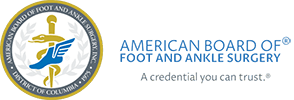Plantar Warts: Bumpy Skin Infections
The Truth about Warts
Plantar warts are non-cancerous skin growths that develop from a virus. A hard, rough patch develops, ranging from a few centimeters to an inch in diameter. The boundaries are well-defined and the bump may appear similar to a callus. Typically the lesion is gray or brown. It may have little spots of black in the center as well.
Warts are stubborn infections that have a habit of spreading to other parts of the lower limbs, or reappearing repeatedly. Sometimes multiple lesions grow clustered together and form mosaic warts. The plantar varieties generally grow under high-pressure areas, such as the ball of the foot or the heel. Since they can be sensitive to pressure, this can make it uncomfortable to walk around.
From a Virus, Not a Toad
The old tale that toads can give you warts is just a myth, but you can acquire the fleshy growths from the environment. The culprit, the human papilloma virus (HPV), exists in the environment around you. It infects your feet by invading the skin through a small cut or other break in your skin’s surface. The virus tends to thrive in damp, warm locations, so walking barefoot in locker rooms or public restrooms increases your odds of developing the problem. You can also catch the growths by touching someone else’s plantar warts.
The lesions are difficult to eradicate, though eventually the body will fight back against the virus. It may take an extended period of time—up to several years—for warts to resolve on their own. Treating the growths, however, can help eliminate the pathogen and get rid of the bump sooner.
How to Handle Warts
It’s best to seek help to eliminate plantar warts. There are over-the-counter treatments available, but if they are applied incorrectly, you risk damaging the healthy skin around the lesion—and still be stuck with a wart. Dr. Brandon S. Percival, Dr. Julie A. Percival, and Dr. William Harris will evaluate the bump to rule out look-alike skin problems. Then our experienced staff will begin a targeted treatment plan to shrink and destroy the fleshy growths.
There are multiple types of medicines and minor procedures to get rid of warts. Peeling medication with salicylic acid is one of the most common methods. It removes the bump’s layers a little at a time. Immune therapy uses medications to stimulate your body’s natural immune system to attack the virus more vigorously. Cryotherapy freezes the bump and causes the infected layers to peel off. The whole growth can also be entirely excised, or cut away, to simply remove it from your foot. You may need to persist with the treatment for a little while to truly eradicate the wart and prevent it from returning.
Plantar warts are unpleasant, unsightly growths that can make putting pressure on certain areas of your feet very uncomfortable. You don’t have to suffer with the growth as you wait for it to resolve, though. Treating it properly can help get rid of the infection and restore your skin to full health. Let Carolina Podiatry Group help you restore your feet to beauty and comfort. Contact us for an appointment through the website, or by calling our South Carolina locations: (803) 285-1411 for Lancaster, or (803) 548-FEET for Indian Land.







